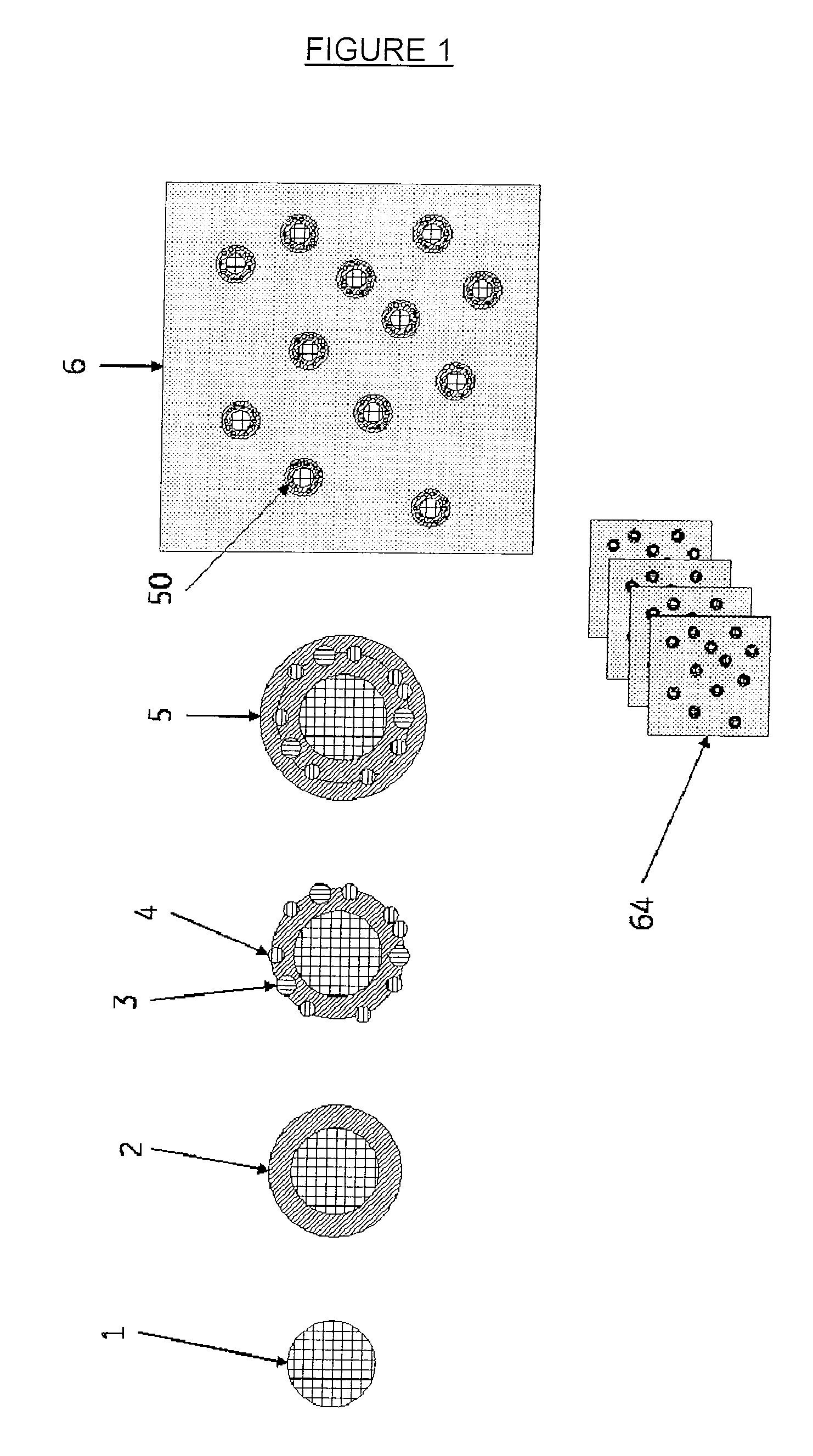Microscopy imaging phantoms
a technology of microscopy and imaging phantoms, applied in the field of imaging phantoms, can solve the problems of not providing the representation of complex biological structures desired in an imaging phantom, the standard is not suitable for representation, and the development of imaging standards is less well-developed. , to achieve the effect of reducing the quality of the resultant image, and limiting the full visualisation of the specimen
- Summary
- Abstract
- Description
- Claims
- Application Information
AI Technical Summary
Benefits of technology
Problems solved by technology
Method used
Image
Examples
Embodiment Construction
[0050]A polymeric matrix material in the form of an elongated solid structure (or block) may be produced by means of a number of alternative techniques depending on whether a regular (ordered) array of internal elements are desired or whether the internal elements are disposed in the matrix in a random or irregular manner. For example, in one procedure, imaging blocks may be produced by a sequential dipping and rolling process as shown in FIG. 1. A polymer rod [1] is used as the core of the phantoms to represent a cell nucleus. The rod may comprise a plastic or other polymer containing a coloured dye, a fluorescent dye, a refractive index modifier or any other agent suitable for visualisation by the microscopy technique to be employed in imaging the phantom. For example, for a cell phantom to be used for fluorescent microscopy the rod may comprise a polymer containing CY™5 (GE Healthcare).
[0051]The core rod is dipped one or more times into a melt or viscous solution of a second poly...
PUM
| Property | Measurement | Unit |
|---|---|---|
| wavelengths | aaaaa | aaaaa |
| wavelengths | aaaaa | aaaaa |
| diameter | aaaaa | aaaaa |
Abstract
Description
Claims
Application Information
 Login to View More
Login to View More - R&D
- Intellectual Property
- Life Sciences
- Materials
- Tech Scout
- Unparalleled Data Quality
- Higher Quality Content
- 60% Fewer Hallucinations
Browse by: Latest US Patents, China's latest patents, Technical Efficacy Thesaurus, Application Domain, Technology Topic, Popular Technical Reports.
© 2025 PatSnap. All rights reserved.Legal|Privacy policy|Modern Slavery Act Transparency Statement|Sitemap|About US| Contact US: help@patsnap.com



